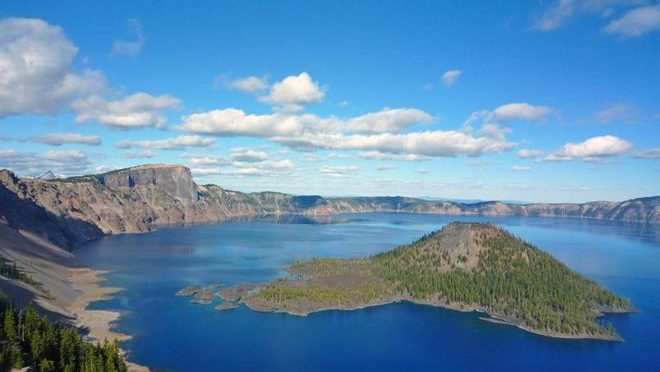As the sun declines, we pass from point to point to get changing views and catch the inspiration of the wonder scene. The snowdrifts clothe the mountain, and have reached over to embrace the inner wall. The wind, that with chill determination sweeps the mountaintops, has caught the tone of winter. The first sight was disappointing, for it was not what I conceived it to be, and, indeed, I could not conceive it to be what it was. Sometime in the dim, volcanic past, there must have stood here, with those clustered heights forming a portion of its cliffs and spurs, a mountain mighty as Shasta–grander than its neighbor, McLoughlin–desolate as Hood. There must have come, at some time, a revival of its internal fires that made it consume itself and sent its burned-out ashes to desolate the far interior. Deep down it burned, thousands of feet below the circling wall of summits that remain to tell the story, and when the agony was over and the vast cauldron had settled and boiled away to the very dregs, these waters welled up from Nature’s vast and hidden springs, upheld by some power we cannot understand, vast and deep, and cold as the eternal snows. I was disappointed, because I had not realized the extent of Crater Lake. Standing upon a kingly summit, I looked at the blue expanse that for once reached down to a horizon that seemed far below me. The ethereal blue was above and around me, but what was this sea of azure that lay between the mountain walls, ten miles distant, and reached far down beneath my feet? Above me was a sky that wore a troubled look, half-intelligible of coming storm, freckled with fear, furrowed with cloud-reaches that half-shadowed the closing day, and down below lay a sea of blue that reflected its sensations and gave theman untranslatable beauty that changed and grew stranger as the rippling winds borrowed wings from the upper currents and fanned the waters into a reflection of weird shadows that gave an unearthly mystery and wonder to the scene.


